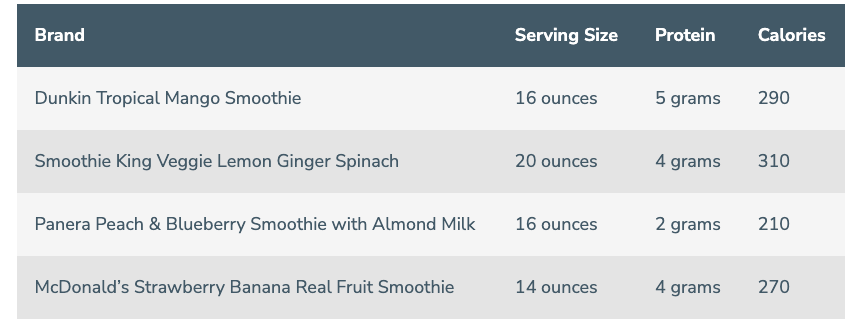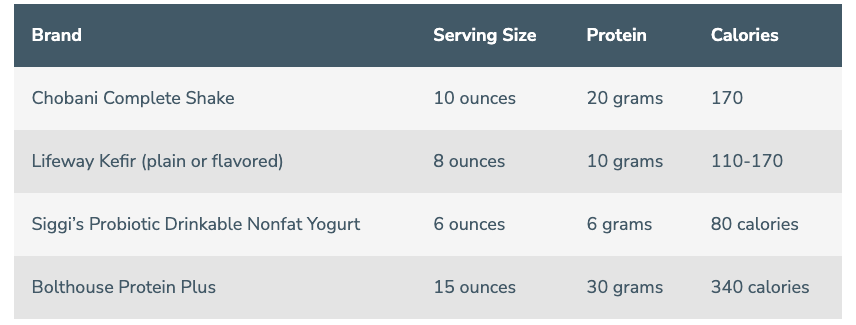Press Release
Article
Smoothies: A Healthy Choice?
Are smoothies as good as actually eating those fruits and vegetables?
Smoothies can be a great way to get fruit and vegetables into your diet, and even grains (more about that later). But are they as good as actually eating those fruits and vegetables?
5second - stock.adobe.com

For starters, ask yourself some questions. When and why do you want a smoothie? Is it a snack? Meal replacement? Many people don’t sit down to breakfast, preferring to take a smoothie for portable nutrition.
Some may remember Carnation Instant Breakfast as the original, “on the go meal;” a powder that “makes milk a balanced meal.”
Fast forward 50 years to the breakfast smoothie you can purchase ready to drink from a restaurant or grocery store. In the table below, you will notice the calorie differences. Calories go up with added sugars, full fat dairy, and juice instead of fruit. These examples are fairly low in protein. Protein can keep you full longer, also known as increased satiety.
Check the calorie level and what is being added to the smoothie. Make sure you’re not getting one that contains high calories but low protein.
Ready to Drink Smoothies
Quick Serve Restaurants

Retail/Grocery Stores

If the price and nutritional stats on the smoothies in the charts concern you, you may be ready to try making them at home. Making your own allows you to control all the contents, and you’ll save money!
The Right Equipment
Start with a basic blender or immersion blender. Advanced smoothie chefs can try a Blendtec or Vitamix blender, but be prepared to plunk down more cash for these. Many opt for a mid-priced version such as a Ninja brand, Magic Bullet or Nutribullet. Using a high-powered blender such as BlendTec or Vitamix will blend everything to a super smooth consistency. You might even be able to blend whole strawberries without taking off the green tops.
Ingredients
Consider making your own smoothies with fresh or frozen fruit. If using frozen, choose fruit without added sugars. You might have extra berries or bananas in the home that are overripe. Don’t toss these! Use them for a smoothie now or freeze them to use later. This is a fantastic way to avoid food waste.
Fruit or Vegetable
Fruits are almost always sweeter than vegetables. Add small amounts of vegetables. Increase gradually over time and see what works for you. You may want to follow a recipe at first to get the right proportion. Easy to blend veggies include beets, canned pumpkin, chopped spinach, carrots, and kale. Some recipes even include Avocado or Cauliflower!
Think about adding some wheat germ, ground flaxseed, or oatmeal. These will add fiber to your smoothie.
Protein
To give your smoothie protein try a small amount of nut or seed butter, yogurt, soy milk or skim milk. Cottage cheese is high in protein but may add a saltier taste to the smoothie. Remember almond and oat milk may have little protein to contribute to the mix. Almond milk provides few calories (30-40), and oat is higher (80 calories) per 8 oz serving and not much protein.
Summary
Smoothie lovers should enjoy the taste of these cool treats but be aware. Look at the nutrition facts and ingredients. Make sure you aren’t enjoying a milkshake with a healthy name!
Selected Sources & Further Reading
- Longobucco A. (2023, Feb 16) “The 8 Best Blenders for Smoothies, Soups, and Frozen Drinks,” Food & Wine.
- Metzer Warren R. (2022, May 8) “Healthier Smoothies at Jamba, Panera, Smoothie King, and Other Chains,” Consumer Reports.
- Moyer, L. (2022, May 3) “What’s in the Best Smoothies & Shakes,” Center for Science in the Public Interest






